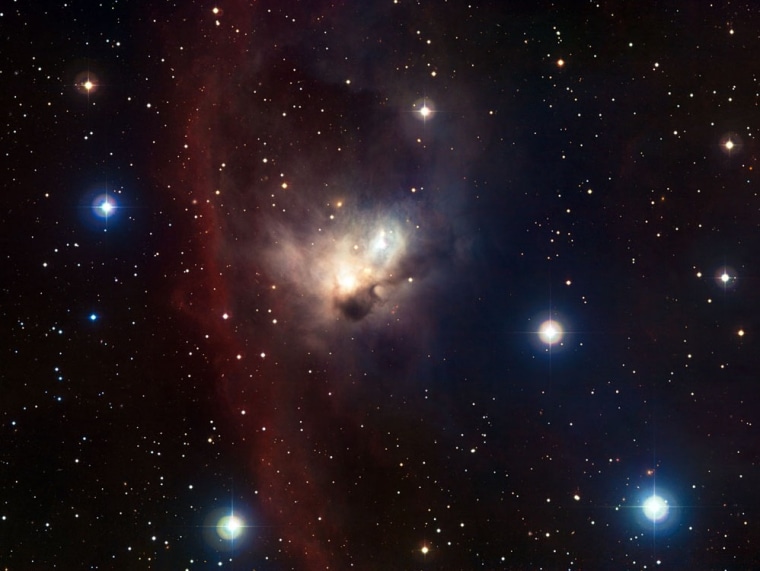A new photo of a nebula hidden near the constellation Orion reveals gas in the shape of a bat spreading its wings.
Orion's bright stars emit powerful winds and light that have shaped the delicate nebula, called NGC 1788. Its chaotic environment has helped it become a stellar nursery — home to a multitude of infant suns.
NGC 1788 is a reflection nebula, where gas and dust scatter light coming from a small cluster of young stars. The resulting shape is reminiscent of a large bat with wings open wide.
This image, captured by the MPG/ESO 2.2-meter telescope at the European Southern Observatory's La Silla Observatory in Chile, was released today.
Bright, massive stars in Orion are thought to be responsible for setting the nebula's hydrogen gas ablaze in some areas, leading to the red, almost vertical rim visible in the left half of the image.
Very few of the stars belonging to the nebula are visible in this image, as most of them are obscured by the dusty cocoons surrounding them. The most prominent, named HD 293815, is the bright star in the upper part of the cloud, just above the center of the image and the pronounced dark lane of dust extending through the nebula.
All the stars in this region are extremely young, with an average age of only a million years, a blink of an eye compared to the sun's age of 4.5 billion years.
The distribution of stars, with generally older ones closer to Orion and younger ones concentrated on the opposite side, suggests that a wave of star formation generated around the hot and massive stars in Orion and propagated throughout NGC 1788 and beyond.
The La Silla Observatory is one of several operated by ESO in Chile, though none were damaged during the powerful earthquake that struck the South American country last week.
